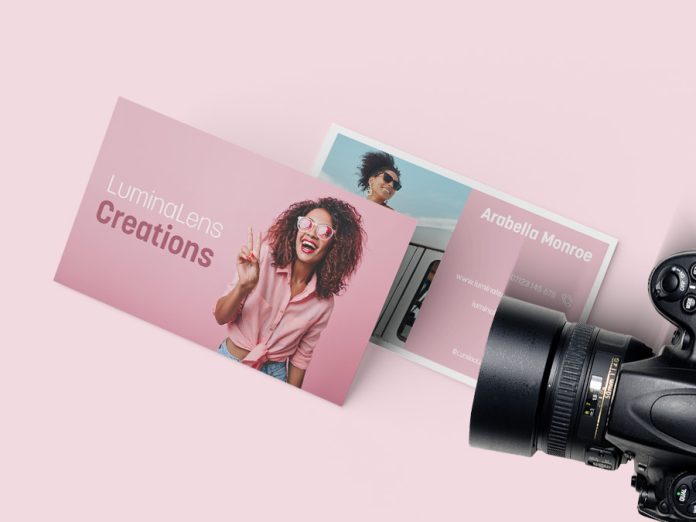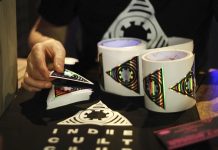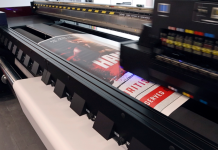Photography Business Cards are a crucial tool for building and promoting your brand. A well-designed and standout Business Card can make a lasting impression on potential clients and help you stand out in a saturated market.
In this piece, we will explore the importance of Business Cards for your brand, discussing the key elements of an effective Business Card design, the benefits they offer, and how they can contribute to the growth and success of your photography business. Whether you are a professional photographer or an aspiring one, discover why investing in high-quality and creative photography Business Cards is a worthwhile endeavour.
Understanding the power of Business Cards
Elevating your brand with Business Cards
Photography Business Cards serve as more than simply a means to share contact information; they are a tangible extension of your brand identity. A thoughtfully designed card can boost your brand by providing a snapshot of your creative skills. When handed to potential clients, they get a feel for your style and attention to detail.
It’s critical to see your wedding photography Business Cards’ as a first point of contact – an introduction that can lead to deeper conversations and business opportunities. By ensuring that the card reflects your brand’s aesthetics and values, you are setting a professional tone and creating a sense of trust and quality before a client even views your portfolio. In essence, your photography Business Cards can act as a silent ambassador for your brand’s image and ethos.
The role of Business Cards for photographers
Business Cards play a pivotal role for photographers by acting as a bridge between online and in-person networks. They are particularly useful at events, exhibitions, and meetings where a digital profile is not immediately accessible.
A Business Card offers a quick and professional way to exchange information, but for photographers, it’s also a mini-portfolio that prospects can take with them. It’s a chance to showcase your best work and leave a tangible reminder of the visual services you offer.
Moreover, photography Business Cards can also encourage word-of-mouth recommendations. When someone is impressed by your card, they’re more likely to pass it along or refer you to others. In a sector where visual impression is paramount, a striking Business Card can be the difference between being remembered and being overlooked.
Crucial elements of photography Business Cards
Integrating your branding into your design
Integrating your branding into your photography Business Cards is essential for creating a cohesive brand identity. Your Business Card templates should be a reflection of your photographic style and brand personality. This means using the same colour scheme, fonts, and logos that are present on your website, portfolio, and other marketing materials. It’s about consistency; when clients see your Business Card, they should immediately connect it with your brand.
To integrate your branding effectively, consider including a signature image that represents your work, or a distinct design element that you carry across all your branded materials. This creates a strong visual link and helps potential clients remember you. Remember, every element on your card should serve a purpose and contribute to the overall narrative of your brand.
Unique design ideas for photography Business Cards
When designing photography Business cards, it’s crucial to think outside the box to create a unique and memorable card. One idea is to use a die-cut process to create cards in the shape of a camera or lens, which instantly signifies your profession. Another is to use a spot UV coating on certain elements of the card, like your logo, to make it stand out with a glossy finish against a matte background.
You could also consider using a fold-out card design that resembles a camera’s shutter opening to reveal your information. For the environmentally conscious brand, cards made from recycled materials can convey a message of sustainability. Additionally, integrating elements of your photographic technique, such as a black-and-white theme for those who specialise in monochromatic images, can demonstrate your area of expertise. Each of these ideas can help your card capture attention and remain in the minds of potential clients.
Making your Card memorable: Choosing the right materials
The materials you choose for your Business Cards contribute significantly to how memorable they are. Opting for a high-quality, durable paper can convey a sense of luxury and professionalism.
Textured cards can add a tactile element that encourages people to engage more closely with your card. Matte finishes can offer a sophisticated, modern look, while glossy finishes can make colours pop and images stand out. You might also consider using metal or plastic for a more distinctive and durable card that stands out from traditional paper cards.
For an even more personalised touch, some photographers use specialised printing techniques like letterpress or embossing to create a 3D effect that adds depth and character to their cards. The key is to choose materials that align with your brand’s image and stand up to the wear and tear of being carried around in wallets and pockets.
How to create impactful photography Business Cards
The significance of quality images in Business Cards
The use of high-quality images is paramount in Business Cards. For photographers, the card is a direct representation of their work, and thus the image quality must be impeccable. A sharp, well-composed, and well-lit photograph will speak volumes about your professionalism and attention to detail.
It’s often advisable for custom photography Business Cards to choose an image that is not only visually striking but also encapsulates your style or specialisation. This could be a breathtaking landscape, a compelling portrait, or a dynamic action shot depending on your niche. The chosen image should be printed with precision to ensure that the colours are true to life and the details are crisp.
It’s worth investing in professional printing services to guarantee that the image on your card is produced to the highest standard. A standout image can make your Business Card a keepsake rather than just another piece of paper.
Combining creativity and professionalism in a single Card
Achieving a balance between creativity and professionalism on a photography Business Card is crucial. The card should be an embodiment of your artistic skills while also conveying a sense of reliability and trust.
Start by selecting a design that is not only artistically pleasing but also aligned with professional standards. This means avoiding clutter and ensuring the card is easy to read with a clear hierarchy of information. Creative elements can be introduced through innovative layouts, custom typography, or interesting visual effects that don’t overpower the essential details such as your name, contact information, and areas of expertise.
It’s also beneficial to incorporate creative yet subtle touches that reflect the art of photography, like a watermark or a clever play on photographic terms. By striking this balance, your card will not only capture attention but also reassure clients of your professionalism.
Effective use of colours and typography for photography cards
The strategic use of colours and typography is essential in creating a photography Business Card that stands out. Colours have the power to evoke emotions and should be chosen to reflect the tone of your brand. For instance, black and white can imply a classic and timeless feel, while vibrant colours might suggest creativity and energy. It’s important to use a colour palette that complements, rather than competes with, the images on your card.
As for typography, clarity is key. The typeface selected should be legible at a small scale and pair well with the overall design. It’s often effective to use a clean, sans-serif font for contact information to ensure readability, while your name or brand can be in a more distinctive font to make it memorable.
Avoid over-stylising fonts, as this can detract from the professional quality of the card. Remember, the goal is to create a harmonious design that enhances the card’s impact without overwhelming the essential, relevant information it carries.
The do’s and don’ts of photography Business Cards
Common mistakes to avoid in designing a photography Business Card
When designing photography Business Cards, several common pitfalls should be avoided to ensure your card is as effective as possible. Overloading your card with too much information can lead to a cluttered design that’s hard to navigate.
Stick to the essentials: your name, contact information, and a hint at your specialisation. Another mistake is using low-resolution images, which will render poorly when printed and reflect negatively on your attention to detail. It’s also advisable to avoid overly trendy designs that may quickly become dated; instead, opt for a timeless look that represents your brand consistently over time.
Be wary of choosing paper of an unusual size or shape that might be memorable but impractical, as it may not fit in standard cardholders. The choice of illegible fonts or colours that lack contrast can also hinder the card’s readability. By dodging these common errors, you’ll be on your way to creating a professional and impactful Business Card.
Ensuring your Card is comprehensive and informative
A well-designed Business Card should be both comprehensive and informative. It must provide all the necessary details without appearing cluttered. Your name, business name, contact information, and website or portfolio link are essential. If you specialise in a particular type of photography, it’s worth mentioning this as well to attract the right clientele.
It’s also beneficial to include social media handles if you actively use these platforms for your own business too. However, be selective and only include the channels where you are most active and showcase your work. QR codes can be a modern addition, directing clients to your online portfolio with a single scan.
While it’s important to be informative, ensure that the layout remains clean and that there is a balance between space between text and visual elements. A crowded card can be overwhelming and detract from the key pieces of information you want to convey.
The balance between novelty and professional appeal
Striking the right balance between novelty and professional appeal is key when designing Business Cards. While a unique design can make a lasting impression, it’s important that the artwork doesn’t overshadow the professionalism of your services. Novelty elements should be subtle and enhance the card’s message rather than becoming a distraction.
For instance, a creative card shape or material can differentiate your card, but make sure it still fits within standard dimensions and is practical. Similarly, interactive elements like pop-ups or fold-outs can be engaging, but they must not compromise the card’s durability or the clarity of your contact information.
Always let the quality of your photography lead the design. Novel features should complement the work you’re showcasing, reinforcing your brand rather than detracting from it. This approach ensures that your Business Card stands out for the right reasons and reflects a high level of professionalism.
Optimising your Card for your target audience
Tailoring your Business Card to your photography niche
Tailoring your Business Card to your photography niche is a strategic way to appeal directly to your target audience.
If you specialise in wedding photography, for instance, the design of your card could feature elegant and romantic elements, soft colours, and a classic typeface. Conversely, a photographer focusing on corporate events might opt for a sleek, minimalist design with bold fonts and logos and a restrained colour palette to convey professionalism.
It’s also important to consider the imagery you use. Select a photo representative of your niche that showcases your skill in that particular area. If you cover a range of styles, consider a design that allows for multiple images, perhaps through a mini portfolio or a collage, to demonstrate your versatility.
By customising your Business Card to reflect your speciality, you immediately communicate your expertise to potential clients in that field, making it more likely that they will remember and choose to hire you for their photography needs.
Aligning your Card with your client’s expectations
When creating photography Business Cards, aligning the design with your client’s expectations is essential. Your card should reflect the level of service and the experience that clients can anticipate when working with professionals and you. This means understanding your audience and what they value in a photographer.
For example, if your clients value creativity and uniqueness, showcase these traits through innovative design elements or unusual materials. If they expect luxury and high-end service, opt for quality cardstock with premium finishes. Incorporate elements that resonate with your client base, such as eco-friendly materials for environmentally conscious clients.
Moreover, the delivery of the information presented should be clear and concise, providing clients with the confidence that you are accessible and responsive. A well-aligned Business Card reassures clients that their expectations will be met, which is a crucial step in establishing a trusting relationship from the outset.










